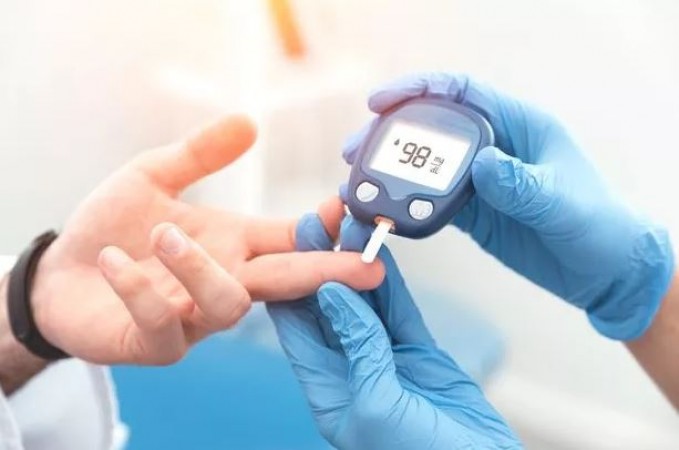
Diabetes is a chronic metabolic disorder that affects millions of people worldwide. Timely diagnosis and management are crucial to prevent complications and improve overall quality of life for individuals with diabetes. Recognizing the early signs of diabetes can lead to prompt intervention and better outcomes. We often ignore warning signals that indicate the onset of diabetes, an illness that's far more rampant in India than you could imagine. This article will explore seven common early signs of diabetes, empowering readers to seek medical attention if they experience any of these symptoms.
Frequent Urination (Polyuria):
One of the primary early signs of diabetes is frequent urination, also known as polyuria. As blood sugar levels rise, the kidneys work harder to filter and remove excess glucose from the body, resulting in increased urine production. If you find yourself needing to visit the bathroom more frequently, especially during the night, it could be an indication of diabetes. When you suffer from diabetes, your body raises your blood sugar levels and uses fluids, causing your body to make more urine. Also, you may feel more thirsty than usual because you are peeing more often.
Excessive Thirst (Polydipsia):
Polydipsia, or excessive thirst, often accompanies frequent urination in individuals with diabetes. As the body loses more fluids through increased urine output, it leads to dehydration, triggering the sensation of intense thirst. Despite drinking more fluids, individuals with diabetes may feel persistently thirsty and unable to quench their thirst. High blood sugar leads to increased production of urine and the need to urinate more often. Frequent urination causes you to lose a lot of fluid and become dehydrated, so to make up for that loss, your body signals thirst so you’ll rehydrate.
Unexplained Weight Loss:
Unintended weight loss is another early sign of diabetes, particularly in those with type 1 diabetes. When the body cannot use glucose effectively for energy due to insufficient insulin, it begins to break down fat and muscle tissue as an alternative source of fuel. This can lead to rapid and unexplained weight loss, despite normal or increased food intake.f your body can't get energy from your food, it will start burning muscle and fat for energy instead. You may lose weight even though you haven't changed how you eat. See which foods are high in trans fatty acids.
Fatigue and Weakness:
Persistent feelings of fatigue and weakness may be early indicators of diabetes. The body's inability to utilize glucose efficiently can leave individuals feeling tired and lacking energy, even after sufficient rest. Fatigue is often accompanied by irritability and difficulty concentrating. That's because when you eat food, your body breaks it down into glucose, which the cells use for energy. Your cells need insulin to take in glucose. In case your body can't make enough insulin, the glucose can't get into the cells. This can cause hunger and fatigue.
Increased Hunger (Polyphagia):
Despite experiencing weight loss, individuals with diabetes may also feel an increased appetite or polyphagia. Insufficient insulin or insulin resistance can prevent glucose from entering cells, leaving the body starved for energy. In response, the body may signal hunger to encourage increased food intake. our body converts the food you eat into glucose that your cells use for energy. But your cells need insulin to take in glucose. If your body doesn't make enough or any insulin, or if your cells resist the insulin your body makes, the glucose can't get into them and you have no energy. This can make you hungrier and more tired than usual.
Slow Healing of Wounds:
Diabetes can affect the body's ability to heal wounds effectively. Elevated blood sugar levels can damage blood vessels and nerves, leading to reduced blood flow and delayed wound healing. Minor cuts, bruises, or sores may take longer to heal, and individuals with diabetes may be more susceptible to infections. A scratch here or sore there is nothing to worry about, but if they do not go away with time, it's a sign of diabetes. That's because high blood sugar levels can damage your blood flow and lead to nerve issues. This can cause trouble in healing sores or cuts.
Blurred Vision:
Blurred vision is a common early sign of diabetes caused by changes in the fluid levels in the eyes due to fluctuating blood sugar levels. High blood sugar can lead to swelling of the lens in the eye, affecting its ability to focus, resulting in blurry vision. If left untreated, this condition can progress to diabetic retinopathy, a serious complication that can lead to vision loss. When your body has fluctuating levels of fluids, the lenses in your eyes can experience swelling. This can cause your eyes to change shape, leading to blurred vision. The next time you observe any issue in the eye or can't see properly, get your blood sugar levels tested.
Recognizing the early signs of diabetes is vital for early intervention and effective management of the condition. If you experience any of the mentioned symptoms, it is crucial to consult a healthcare professional for proper diagnosis and treatment. Early detection and proper management, through lifestyle changes, medications, and regular monitoring, can help individuals with diabetes lead fulfilling and healthier lives, reducing the risk of complications and improving overall well-being.
Diabetes Mellitus: Types, Risk Factors, and Management
Get a diabetes test done immediately If these symptoms are seen in the feet
These 5 grains are a boon for diabetic patients, blood sugar will remain under control